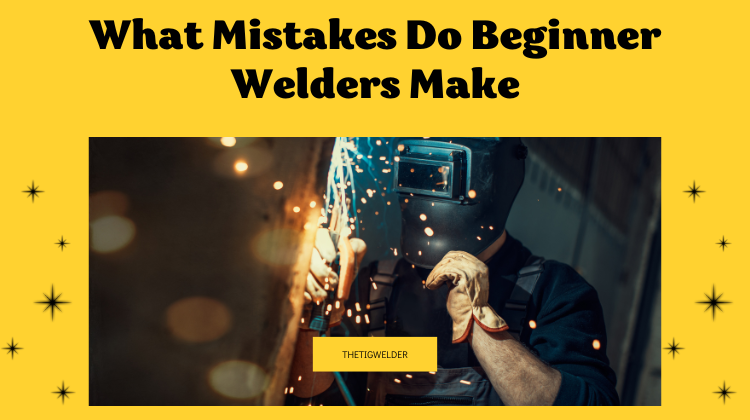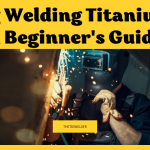Welding is a skilled trade involving using heat and pressure to join metal parts. Welding is critical in many industries, including construction, manufacturing, automotive, and aerospace. Welding is used to build and repair structures, vehicles, and machines and is an important skill in creating strong, durable, and safe products.
Welding requires technical knowledge, physical skill, and attention to detail. Welders must be able to read and interpret blueprints, set up and operate welding equipment, and perform a variety of welding techniques. They must also have a strong understanding of the properties of different metals and how they behave when subjected to heat and pressure.
In addition to technical skills, welders must have good hand-eye coordination, physical stamina, and the ability to work in various positions. They may work in confined spaces, at great heights, or in outdoor environments and must withstand the heat, glare, and fumes associated with welding.

Mistakes That Beginner Welders Make
Welding is a highly skilled trade requiring technical knowledge, physical skill, and attention to detail. It is an important process in many industries, and skilled welders are in high demand. There number of mistakes that a beginner welder can do.
Lack of Proper Equipment
Using the proper equipment is essential for the safety of the welder and the quality of the weld. Welding can be dangerous, and the welder must be properly protected from the heat, glare, and fumes generated during the welding process.
A helmet is one of the most important pieces of equipment for a welder. A welding helmet protects the welder’s face and eyes from the intense light and radiation produced during the welding process. It should be worn when welding to protect against burns, eye damage, and vision loss.
Other important protective gear includes gloves, which protect the welder’s hands from burns and electric shock, and protective clothing, which shields the welder’s body from the heat and sparks generated during welding. It is important that this equipment fits properly and is in good condition.
In addition to protective gear, the welding machine and other equipment used during the welding process must be of good quality and working order. Using good or low-quality equipment can lead to good welds, accidents, and injuries. It is important to regularly check and maintain welding equipment to ensure that it is functioning properly and safely.
Inadequate Preparation and Setup
Proper preparation and setup are essential for successful welding. Before starting to weld, it is important to properly set up the welding machine and work area. This includes ensuring that the machine is properly grounded, that all safety guards and guards are in place, and that the work area is clean and free of flammable materials.
It is also important to properly prepare the materials to be welded. This includes cleaning the metal to remove any dirt, rust, or debris that could affect the quality of the weld. It may also be necessary to preheat or post-heat the metal to control the cooling rate and prevent cracking.
Adequately preparing and setting up the welding machine and work area can lead to good welds, accidents, and injuries. It is important to take the time to properly prepare and set up the equipment and materials before starting to weld.
Poor Joint Preparation
Properly preparing the joint or the area where the weld will be made is essential for a successful weld. This includes cleaning the joint to remove any dirt, rust, or debris that could affect the quality of the weld. The joint should be cleaned using a wire brush or grinding wheel, and paint or other coatings should be removed.
In addition to cleaning the joint, it is also important to prepare the edges of the metal to be welded. This may involve beveling the edges to create a groove for the weld or using a backing strip to support the weld. Proper joint preparation helps to ensure that the weld has good penetration and is strong and durable.
Welding on dirty or unprepared surfaces can lead to poor welds and structural weakness in the finished product. It is important to take the time to properly prepare the joint before welding to ensure a high-quality weld.
Incorrect Welding Technique
Using the correct welding technique is essential for producing strong, high-quality welds. There are many different welding techniques, each best suited for specific types of welds and materials.
Some common mistakes that beginner welders make in terms of the technique include:
Improper travel speed: The travel speed, or the speed at which the welder moves the electrode along the joint, is important for creating a consistent and strong weld. Traveling too slowly can result in an uneven weld bead while traveling too quickly can lead to poor penetration and a weak weld.
Incorrect electrode angle: The angle at which the electrode is held relative to the joint can affect the quality of the weld. Holding the electrode at the wrong angle can result in poor penetration and a weak weld.
Inconsistent arc length: The arc length, or the distance between the electrode and the joint, should be kept consistent with creating a strong weld. Allowing the arc length to vary can result in an uneven weld bead and poor penetration.
It is important for welders to understand the correct technique for the type of weld being performed and to practice and develop their skills to produce high-quality welds.
Lack of Practice and Experience
Gaining experience and practicing welding skills is essential for improving as a welder. Welding is a skilled trade that requires technical knowledge, physical skill, and attention to detail. Developing these skills and becoming proficient at welding takes time and practice.
One common mistake beginner welders make is attempting to weld without good practice or experience. This can lead to poor welds and potentially dangerous situations, as welding requires precise control and a strong understanding of the materials and equipment used.
To improve as a welder, it is important to practice welding regularly and seek opportunities to gain experience. This can involve taking welding classes or working with a more experienced welder as an apprentice. Practicing and gaining experience will help welders to develop their skills and become proficient at producing high-quality welds.
Conclusion
In conclusion, beginner welders make several common mistakes that can affect their welds’ safety and quality. These include lack of proper equipment, inadequate preparation and setup, poor joint preparation, incorrect welding technique, and lack of practice and experience.
By understanding and avoiding these mistakes, beginner welders can improve their skills and produce safe and high-quality welds. It is important for welders to be properly trained and to practice and gain experience to develop their skills and become proficient at welding.

It’s been years since I got into welding as a side hustle. It’s been so long since Doing All kinds of welds for business and pleasure as this is my hobby. Being in this field I have learned from hands-on-experience also came to know what gears work and what doesn’t. The Tig Welder is my own platform where I use to share my experience.






Leave a Reply